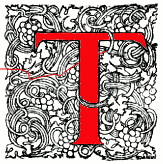Introduction

homas MacLean was born in Deptford, when it was still a part of Kent. in 1845, the son of Horatio Nelson MacLean, an engineer, and his wife Susannah MacLean. Thomas spent some of his early years, until he was ten or eleven, in Birmingham where his father was foreman to a firm of pin manufacturers. While still a boy he made one or two excursions to France and Belgium with his father. He showed a predilection for art from an early age which was recognized by his father. In 1859, at the age of fourteen Thomas went to Paris where he trained with the sculptor Albert-Ernest Carrier-Belleuse, later becoming his studio assistant. He also began attending the École des Beaux-Arts in 1861. In 1868 he began working as a sculptor on his own account. He returned to London during the siege of Paris in 1870 in the midst of the Franco-Prussian War. He then worked for the sculptor Henry Hugh Armstead before again embarking on an independent career as a freelance sculptor. Sir Henry Cole lent him an unoccupied greenhouse at the South Kensington Museum to use as a studio. After 1875 MacLean settled in Florence in Italy for some time in order to become more thoroughly acquainted with the work of the great Italian Renaissance sculptors. This influence is reflected in his later works.
MacLean exhibited regularly at the Royal Academy from 1870 to 1891. He also exhibited in London at the Grosvenor Gallery from 1877 to 1890, the New Gallery, the Royal Society of British Artists, the Royal Institute of Painters in Water Colours, and the Royal Institute of Oil Painters. He exhibited as well at the provincial centres including Leeds Mechanics' Institution, the Aberdeen Artists' Society, the Royal Scottish Academy in Edinburgh, the Walker Art Gallery in Liverpool, and at the Royal Glasgow Institute of the Fine Arts. In 1878 he was nominated for membership in the Royal Academy by Thomas Woolner and seconded by Laurence Alma-Tadema but was unsuccessful. He was elected a member of the Society of British Artists in 1876 but was among the artists who resigned in 1888 in support of James Whistler when Whistler was forced to step down as its president.

MacLean's work, particularly his statuettes, were executed in terracotta, marble and bronze versions. In 1872 he sold four designs to Minton to be reproduced in tinted parian ware. A solo exhibition of his sculptures was held at the Bellman & Ivey gallery in London in 1885. MacLean married in 1894, a few months before his death. He died on November 21,1894 at his home at 113 Church Street in Chelsea, London. — Dennis T. Lanigan
Works
Bibliography
Beattie, Susan. The New Sculpture, Yale University Press, 1983.
Blaikie, James A. "An English Sculptor." The Magazine of Art IX (1886): 233-38.
"Thomas Nelson MacLean." Art UK. Web. 17 April 2025.
Created 17 April 2025